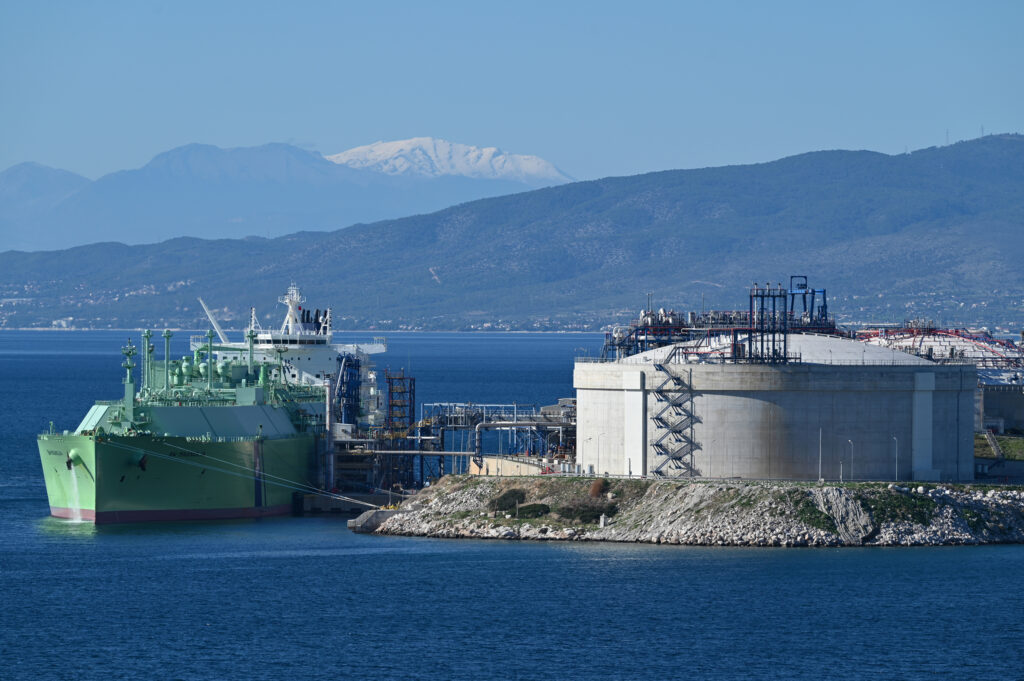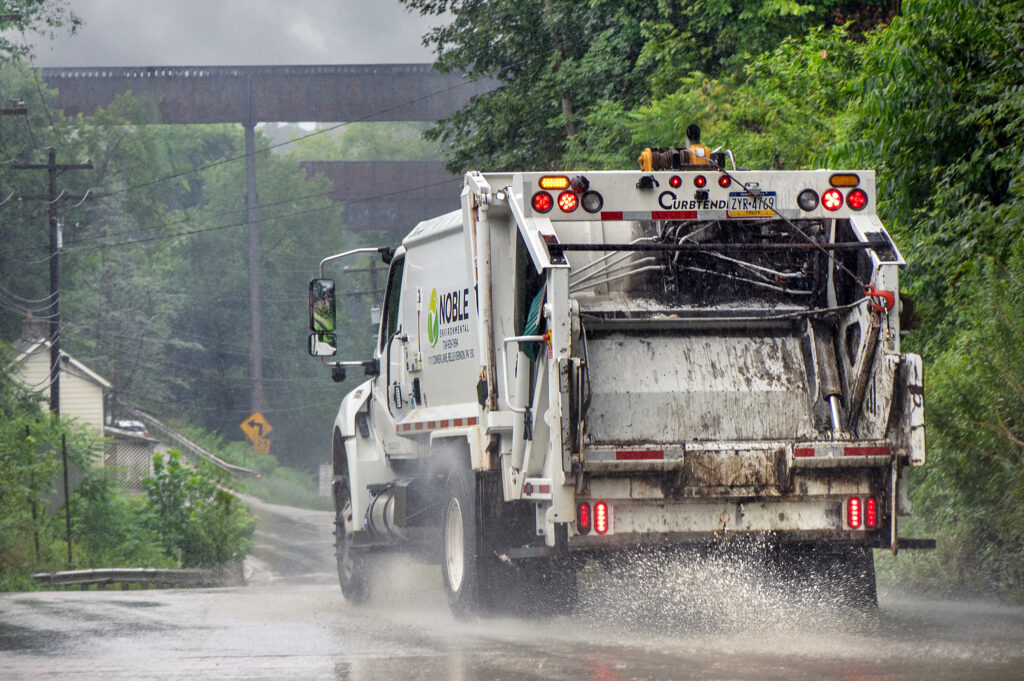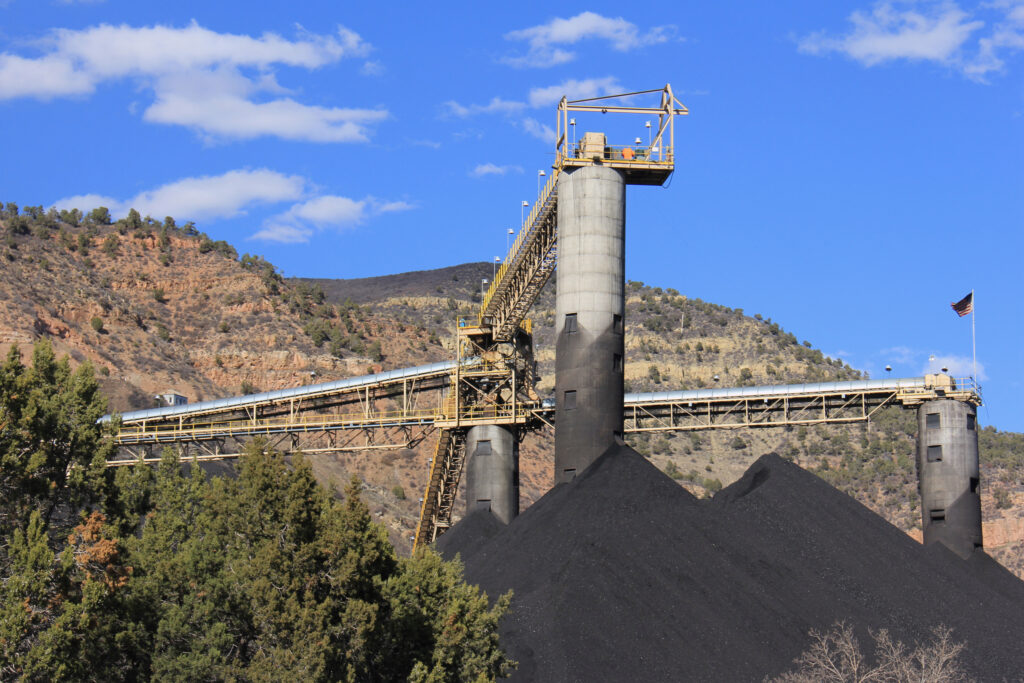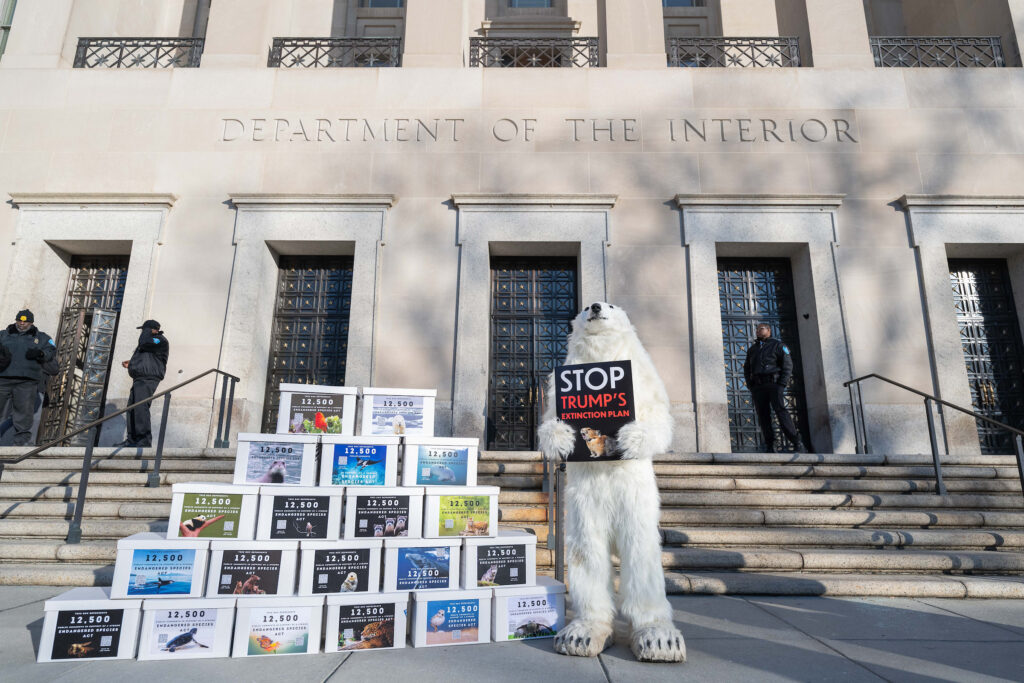Texas has opened more than a million acres of offshore, state-owned waters for proposals from companies to inject greenhouse gas underground for permanent disposal as a means to mitigate climate change.
The request for proposals issued in June by Texas’ General Land Office was its fourth since 2021 and its largest by far, opening waters in Lavaca Bay, Matagorda Bay and far southern Laguna Madre, as well as offshore from South Padre Island, Matagorda Island, Freeport and the Bolivar Peninsula.
So-called “carbon sequestration” forms an emerging pillar of U.S. climate policy. With support from the oil and gas sector, it is poised for rapid expansion, thanks to federal funding. It involves capturing carbon dioxide at industrial smokestacks, piping it to wellheads and pumping it underground instead of releasing it into the air.
Explore the latest news about what’s at stake for the climate during this election season.
“We are really now on the cusp of moving away from institutional research and more towards broad commercial deployment,” said Charles McConnell, former assistant U.S. energy secretary and the director of the Center for Carbon Management in Energy at the University of Houston.
The practice remains expensive and technically challenging, and there are few commercial-scale examples in operation despite decades of support for the technology. Many environmentalists have warned that carbon sequestration could fail to meaningfully reduce greenhouse gases warming the planet while prolonging demand for fossil fuels.
But McConnell expects long-term demand for fossil fuels with or without carbon sequestration. Worldwide energy demand continues to grow while renewable sources have mostly supplemented fossil fuel power generation rather than replacing it. And, McConnell said, many petrochemicals like plastics can’t currently be produced without fossil fuels.
He and other industry leaders foresee the Gulf Coast becoming a global hub for carbon disposal, thanks to three factors: favorable geology, proximity to industrial emissions and the simplicity of working on state-owned land. All that’s missing is a revenue model.
“It’s largely on the back of government subsidies. In the long term, that’s not a sustainable solution,” McConnell said. “We’re going to spend a lot of money to reduce emissions, and we do not have a market construct in this country that supports it.”
There’s nothing new about pumping carbon dioxide underground. Petroleum producers have done it for decades to squeeze the last drops of oil out of geological formations. Injection wells are also widely used to dispose of oil and gas wastewater.
But drilling new wells for carbon dioxide disposal remains a novel practice. As such, permitting for the program is administered by the federal government via the U.S. Environmental Protection Agency in all but three states.
The EPA has yet to permit the first of these so-called “Class VI” wells in Texas, but it shows 13 permit applications under review with a total of 34 wells. Of those applications, 11 are onshore, one includes offshore sequestration and one is in a coastal wetland. Another project, Bayou Bend by Chevron and TotalEnergies, calls itself the “first offshore stratigraphic well for carbon capture and storage in U.S. state waters.” But a permit application has yet to be filed with the EPA.
Texas’ oilfield regulator, the Texas Railroad Commission, has requested to administer the Class VI permitting program itself, an authority the EPA has already granted to Louisiana, North Dakota and Wyoming.
“The Railroad Commission having permitting authority over Class VI wells would unleash rapid widespread commercial development of [carbon sequestration] in Texas, which is something the state is not prepared for,” said Virginia Palacios, director of Commission Shift, a Railroad Commission watchdog group.
She pointed to a petition filed this year by a coalition of Texas environmental groups alleging “numerous technical deficiencies” with the Railroad Commission’s permitting of injection wells for oil and gas wastewater that have caused well blowouts, endangered water resources, triggered earthquakes and created sinkholes. In June the EPA agreed to investigate the allegations.
Also in June, seven congressional Democrats from Texas asked the EPA not to grant Texas permitting authority over carbon sequestration wells.
“This is a pivotal time to ensure permits are reviewed with great care,” the lawmakers wrote. “Surrendering authority now, especially to a state agency known for neglecting human and environmental health and safety, establishes a dangerous landscape of underregulated wells.”
A spokesperson for the Railroad Commission, Patty Ramon, said, “The Railroad Commission has decades-long history of effectively regulating various classes of injection wells to protect public safety and the environment.”
The Railroad Commission’s proposed regulations for carbon sequestration wells, Ramon said, “enhance this existing framework with requirements that are tailored to the unique nature of large-scale geologic storage of carbon dioxide,” including extensive geologic testing, computer modeling, periodic reevaluations and detailed monitoring.
“Surrendering authority now, especially to a state agency known for neglecting human and environmental health and safety, establishes a dangerous landscape of underregulated wells.”
“Given the variety of geologic settings in which storage will be applied, the Railroad Commission is in the best position to evaluate the specifics related to well depth, geology and hydrogeology,” Ramon said.
One worry is that injected carbon could leak to the surface through other abandoned wells that perforate the formation meant to contain carbon dioxide, said Susan Hovorka, a senior research scientist with the Bureau of Economic Geology at the University of Texas at Austin.
That problem can be solved by locating and plugging those nearby wells, she said. Texas’ bays and near-offshore waters host hundreds of old oil and gas wells, according to a Railroad Commission data viewer.
“I had a long process convincing myself that it does work,” said Hovorka, who has studied carbon sequestration since the 1990s. “The consensus is quite strong now that this is something that needs investment.”
Researchers long ago identified the Gulf Coast as an ideal hub for carbon sequestration. The young sediment piled on the edge of the continent offers enormous, deep layers of porous sandstone that can receive tremendous volumes of carbon dioxide gas, Hovorka said.
The Gulf Coast also stretches past some of the world’s most significant stationary greenhouse gas sources—the petrochemical and refinery complexes of Texas and Louisiana. That shortens the trip for captured gases to injection wells.
Furthermore, the near coastal waters all belong to a single landowner, the state, drastically simplifying the processes of identifying landowners and dividing royalties.
The National Petroleum Council, in a 2019 report to the U.S. Department of Energy, even raised the possibility of importing carbon dioxide for disposal on the Gulf Coast.
“There may also be an opportunity for the United States to market its CO2 storage resources to countries that do not have favorable geology,” said the report from the council, a presidential advisory committee composed of energy executives. “CO2 import and storage along the Gulf Coast could become a parallel market to gas exports.”
The report called carbon sequestration “essential to meeting the dual challenge of providing affordable and reliable energy while addressing the risks of climate change,” but noted that large-scale deployment “will require substantially increased support driven by national policies.”
Three years later, in 2022, Congress passed the Inflation Reduction Act, which boosted tax credits for up to $85 per ton of carbon dioxide captured and injected underground. That legislation has allowed the sector to rapidly develop.
“There has to be an incentive structure in place provided by governments,” said Graham Bain, an analyst in Alberta, Canada, with the energy intelligence platform Enverus.
This story is funded by readers like you.
Our nonprofit newsroom provides award-winning climate coverage free of charge and advertising. We rely on donations from readers like you to keep going. Please donate now to support our work.
Donate Now
Authorities in Canada and Europe have employed “the stick,” he said, imposing penalties for carbon emissions that can be reduced through capture and sequestration. The U.S., meanwhile, has offered “the carrot”— financial credits for carbon sequestration.
If all U.S. carbon sequestration projects currently proposed were built, capacity would reach 150 million tons per year by 2027 and 375 million tons per year in 2050. That would be a small dent in the country’s greenhouse-gas emissions, which topped 6 billion tons in 2022.
A long-term economic model for carbon sequestration remains unclear in the U.S. Low carbon energy from fossil fuels is going to be more expensive, and someone will have to cover the cost.
“Revenue will be critical for commercial viability,” said Kenneth Medlock, senior director of the Center for Energy Studies at Rice University’s Baker Institute in Houston. “Success really depends on consumers’ willingness to pay for it.”

















